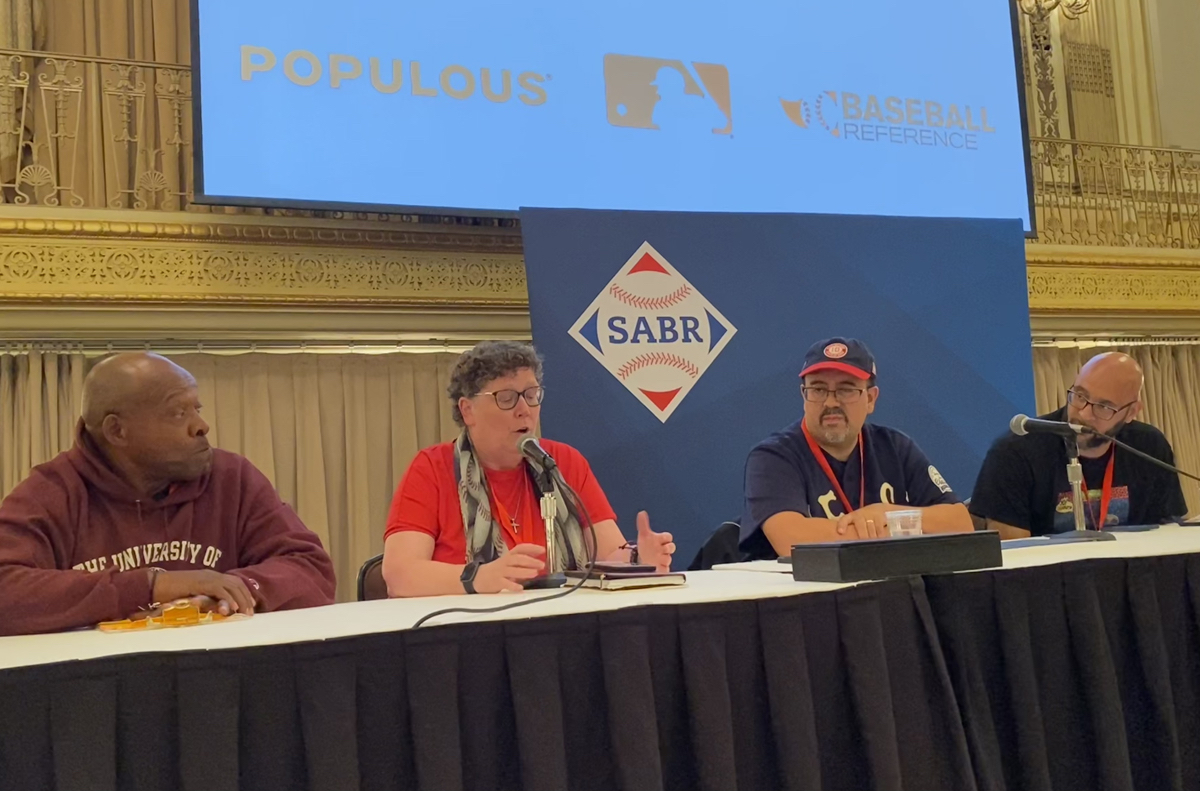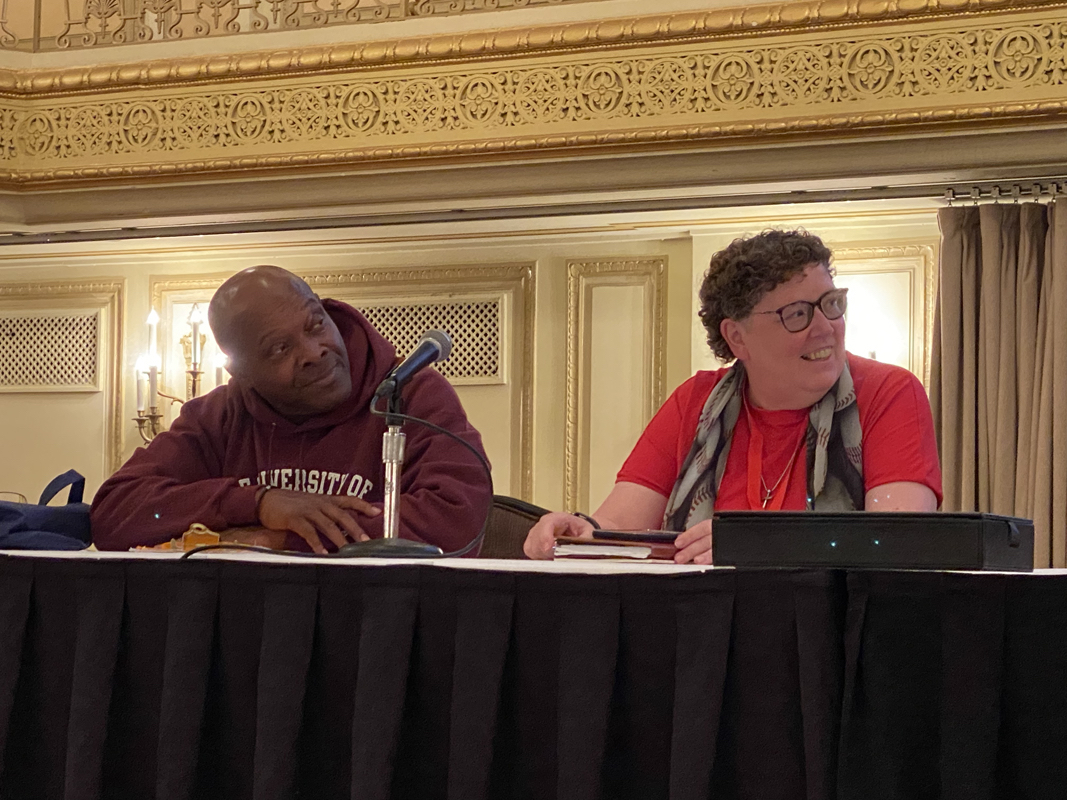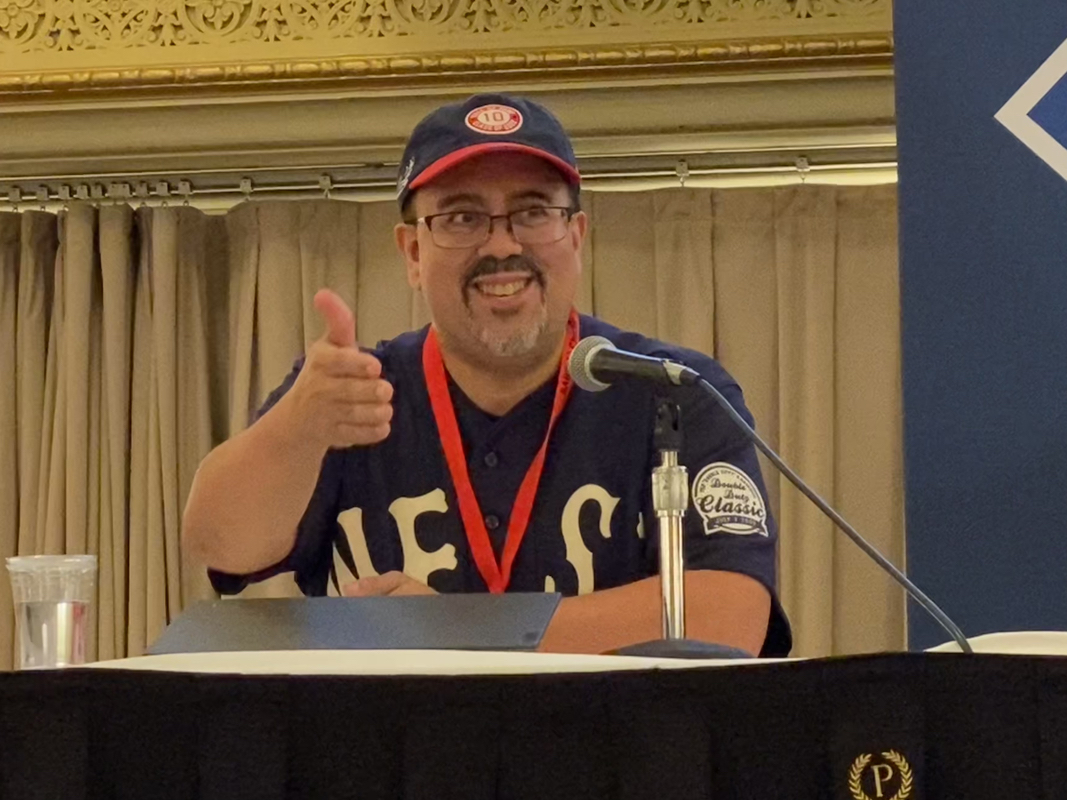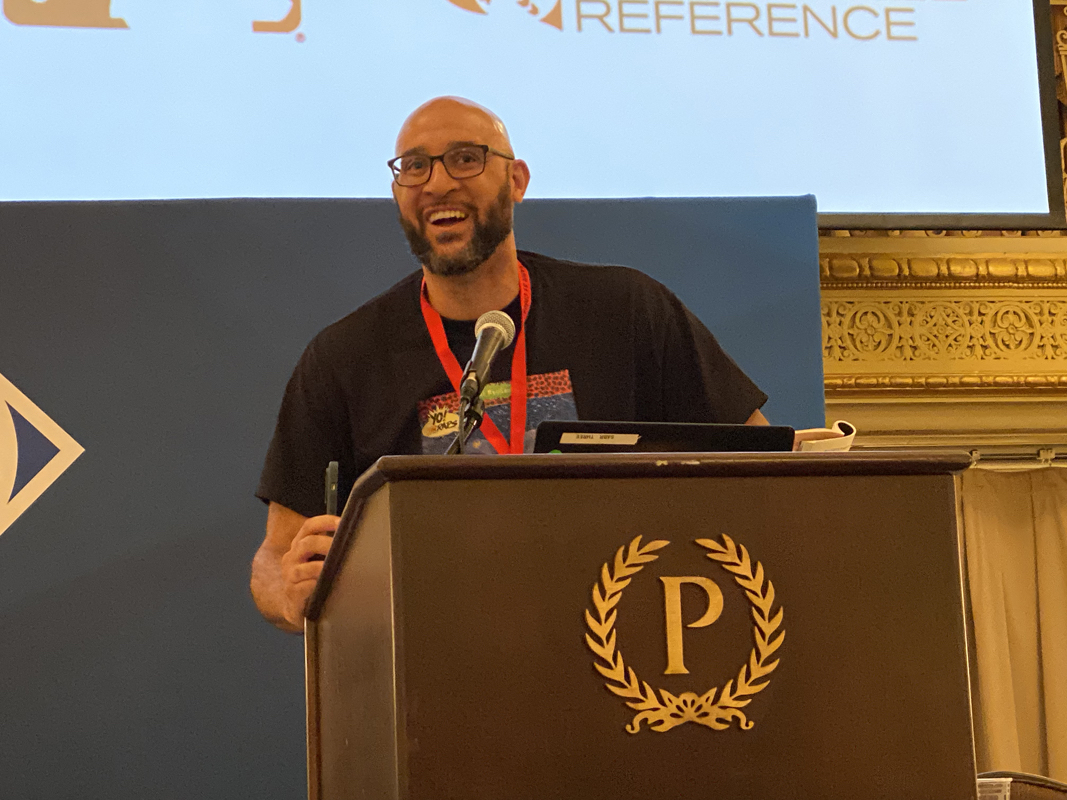SABR 51: Listen to highlights from Black Baseball in Chicago Panel
At SABR 51 on Saturday, July 8, 2023, a panel discussion on Black Baseball in Chicago was held at the Palmer House Hilton hotel.
Panelists included James E. Brunson III, author of Black Baseball: 1858-1900: A Comprehensive Record of the Teams, Players, Managers, Owners and Umpires, which was selected as one of SABR’s top 50 baseball books of the past half-century; Adrian Burgos Jr., a Professor of History at the University of Illinois and author of Playing America’s Game: Baseball, Latinos, and the Color Line; Leslie Heaphy, SABR Vice President and founding editor of the journal Black Ball; and moderator Louis Moore, Professor of History at Grand Valley State University and author of We Will Win the Day: The Civil Rights Movement, the Black Athlete, and the Quest for Equality.
- Audio: Click here to listen to the SABR 51 Black Baseball in Chicago Panel (MP3; 1:00:54)
Here are some highlights:
ON THE IMPORTANCE OF CHICAGO TO BLACK BASEBALL
- Heaphy: “I would argue that Chicago is one of those places, from the late 19th century through the 1920s and then beyond, where it was already a mecca of sports. There are all kinds of sports teams, not just baseball, but industrial leagues, semipro leagues, both in Chicago city proper and beyond, that were going to allow for the opportunity for opponents, for the chances to play without having to travel very far.”
ON THE INFLUENCE OF RUBE FOSTER
- Moore: “Even as a historian, you can’t talk about Chicago in the early 20th century, getting into World War I, without talking about Rube Foster.”
- Heaphy: “We all hear the phrase, Rube Foster, the ‘Father of Black Baseball,’ right? But stopping to really think about what that means, and what that means even to today. … There were leagues, many before 1920, attempts that never got off the ground. And I always say to my students, one of the things that was missing was a person like Rube Foster, who could bring to the table his experience as a player, his experience as a manager, his experience as an owner.”
- Burgos: “In thinking about Rube Foster, yes, a pioneering player and organizer, but I love highlighting his vision. Because for me, as someone who studies Latinos in baseball, he helped set that model. Latinos were always welcomed in the Negro Leagues. This is a league for them. I refer to MLB’s color line. The Negro Leagues did not have a color line. Look at the Latinos who played in the Negro Leagues. They looked like everybody in this room, from the lightest to the darkest. The Negro Leagues did not bar them. They don’t have a color line. It’s the other organization that barred players based on color, based on racial background. That starts with Rube Foster welcoming Manuel Camp, Abel Linares, and later Alex Pompez, to bring their teams of Cubans, (the) All-Cubans, to come to Chicago and elsewhere to play in black baseball.”
ON THE EAST-WEST CLASSIC
- Heaphy: “Right from the very start, between 1933 and 1954, you’re going to see what became essentially the premier event of Black culture anywhere. And there are years where the East-West Classic in Comiskey (Park) is going to outdraw Major League Baseball, and not insignificantly. … When we talk about integration and one of the excuses was, ‘Blacks and Whites, they can’t play together. They can’t sit in the stands together.’ Well, the East-West Classic certainly proved that that was not correct, among many other things.”
- Burgos: “Chicago’s importance was a place of congregation. And so the East-West Classic became a center point, where musicians, sports, the Black elite, the Black intellectuals, can all come together to celebrate Black excellence. And that’s what the East-West Classic was about. All the Black newspapers, for weeks, had the ballots for you to send in. By the way, this (fan voting) was done before the American League-National League All-Star Game. That is, before MLB had their version of the All-Star Game, Black baseball was already putting these things into practice. The Black newspapers were circulating, and Chicago, because of the railroads, because of commerce and migration, became the ideal setting for this.”
ON USING NEWSPAPERS FOR RESEARCH
- Brunson: “There’s a lot to be gained by really just reading anything that you would think otherwise boring, when you’re looking for baseball. You can find out anything from full names of players, whereas when you’re looking at the rosters you only get the last name. … Some of these folks that I’ve discovered just looking at the 19th century and certainly the period that I’m looking at now. Some of these individuals were musicians. And they were intimately connected with ragtime, with the blues, and with jazz. So the newspapers are a great source are a great source of information regarding Chicago baseball.”
Transcription assistance by Davy Andrews.
For more coverage of SABR 51, visit SABR.org/convention.
Originally published: July 24, 2023. Last Updated: July 24, 2023.






